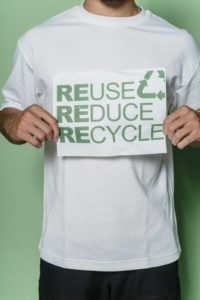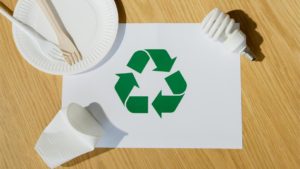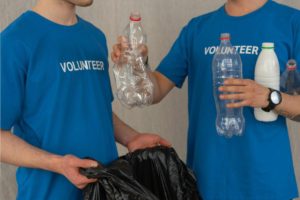At a Glance
- Sustainability confusion: Everyone defines “sustainable” differently — from recyclability to carbon footprint — making the term obtuse and difficult for many to understand.
- Core problem: Vague language, inconsistent infrastructure, and marketing claims create mixed messages and unrealistic expectations.
- Reality check: There’s no perfect solution — every material choice involves trade-offs, and progress matters more than perfection.
- Path forward: Be specific and transparent; clear, data-backed claims build real trust and drive meaningful sustainability progress.
Here’s a question that keeps coming up in boardrooms, trade shows, and late-night packaging reviews: What does “sustainable” actually mean?
It’s not a trick question, but it might as well be. Ask ten different people in the food industry, and you’ll get ten different answers. One person talks about recyclable materials. Another mentions carbon footprints. Someone else brings up composting. And before you know it, everyone’s nodding along but talking about completely different things.
This confusion isn’t just annoying — it’s expensive. It leads to mismatched expectations, questionable marketing claims, and products that miss the mark entirely. So why can’t we all agree on what sustainability means? Is this really so hard?
This week, we spoke with Diana Thomas, Sustainability Manager at BioLogiQ. Diana has spent the last decade integrating sustainability values and programs into business operations, focusing on change in the commercial foodservice and packaging sectors. BioLogiQ is a materials science company pioneering the shift toward more sustainable plastics through its bio-based and biodegradable resin technologies.
In this article, we’ll break down why sustainability definitions are all over the map, what’s driving the confusion in food packaging specifically, and how to cut through the noise to make real progress.
Words Matter More Than You Think
 Let’s start with something basic: Definitions matter. They really do. They’re not just academic exercises — they’re the foundation of how we communicate, set standards, and create laws.
Let’s start with something basic: Definitions matter. They really do. They’re not just academic exercises — they’re the foundation of how we communicate, set standards, and create laws.
The best working definition comes from the United Nations Brundtland Commission: Sustainability means meeting today’s needs without compromising the ability of future generations to meet theirs. Simple enough, right? It’s basically not overdrawing the bank account.
But here’s where it gets messy. Sustainability can mean responsible water management. Or energy efficiency. Or biodiversity protection. It can mean fair labor practices. Or carbon reduction. The list goes on.
For food packaging, this creates a unique problem. When someone says a package is “sustainable,” what are they claiming? Does it contain recycled content? Is it recyclable? Does it have a lower carbon footprint? Does it biodegrade? All of the above?
Without clarity, the word becomes meaningless — or worse, misleading.
The Three Big Confusion Drivers
Definitions (Again, Because They Really Matter)
The packaging world loves its terms: Eco-friendly, green, sustainable, and environmentally conscious. These sound good, but they don’t tell you much. It’s like describing food as “tasty,” or “natural”— technically true, but what does it actually mean?
The opportunity lies in being specific. Instead of “sustainable packaging,” try “made with 50% recycled content” or “certified compostable.” These claims tell a story while providing actual information. They show the “how” and “why” behind the sustainability claim.
Geography Is the Hidden Secret to Success (or Failure)
Here’s something most people don’t think about: Where you live completely changes what happens to your waste.
Different counties have different waste systems. Different states have different systems and laws. One region has composting facilities that accept certain materials. Another has none at all. A package that’s “recyclable” in California might be landfill-bound in Kansas — not because the package changed, but because the infrastructure did.
And it’s not just about what facilities exist. It’s about communication. Even sustainability experts don’t get formal training on how to sort waste properly unless they actively seek it out on a regional basis. The system varies from place to place, yet we expect consumers to figure it out on their own.
Then add this wrinkle: Manufacturers have to comply with fifty different state regulations about what they can claim, what they can label, and what counts as acceptable. It’s a compliance nightmare wrapped in a logistics puzzle.
The Marketing vs. Truth Tightrope
 There’s a tension in sustainability messaging that nobody likes to talk about.
There’s a tension in sustainability messaging that nobody likes to talk about.
From an ethics standpoint, more transparency is better. Detailed sustainability reports with specific goals and progress tracking should be the standard. Numbers matter. Data matters.
But from a marketing standpoint, emotional stories connect with people more than percentages. “Made with 50% recycled materials” is technically more accurate than “repurposing waste to make your products,” but which one actually resonates?
The trick is walking the line between keeping messages simple enough to understand while staying honest about what you’re actually doing. Don’t mislead. Don’t overclaim. But also don’t bury the lead in technical jargon that makes eyes glaze over.
It’s an art form, truly.
Perfect Is the Enemy of Good
Here’s a truth bomb: If you’re waiting for the perfect sustainable solution, you’ll be waiting forever.
The reality is trade-offs. Always trade-offs. You want food packaging that uses no fossil fuels, has minimal shipping emissions, works in all recycling streams, biodegrades quickly, costs the same as conventional options, and has massive consumer demand?
Great. So does everyone else. But all those factors don’t align neatly. One improvement often means accepting a drawback somewhere else.
Take recycling. We’ve treated it as the silver bullet for decades. The recycling campaigns were incredibly effective — so effective that most people think “sustainability” automatically means “recycling.”
 But here’s the uncomfortable reality: Just because something’s designed to be recyclable doesn’t mean it gets recycled. PET bottles are 100% recyclable, yet only about 30% actually get recycled, according to data from NAPCOR. The rest becomes waste, pollution, and wasted fossil fuels.
But here’s the uncomfortable reality: Just because something’s designed to be recyclable doesn’t mean it gets recycled. PET bottles are 100% recyclable, yet only about 30% actually get recycled, according to data from NAPCOR. The rest becomes waste, pollution, and wasted fossil fuels.
Why so low? The gap isn’t about material design — it’s about systems and people. Recycling access, sorting technology, and consumer behavior all vary by region. Some communities lack curbside collection. Others collect mixed materials that become contaminated and unusable. Even when bottles are captured, not all get processed into food-grade resin because of infrastructure limitations.
Contrast that with parts of Europe, where deposit-return systems make recycling nearly effortless. Countries like Germany achieve return rates above 90%, thanks to consistent infrastructure and clear consumer participation. In other words, it’s not that Americans don’t care — it’s that the system makes doing the right thing harder than it should be.
So what was the tradeoff? While society pushed and pushed to make recycling the answer, we could have been improving the design of the material itself — using safer materials and reducing microplastic potential (which, fun fact, is what BioLogiQ is doing).
This isn’t an argument against recycling. It’s a reminder that no single solution is perfect, and waiting for perfection means never starting at all.
Progress beats perfection every time. Making packaging with 10% fewer carbon emissions might not be revolutionary, but when you multiply that across millions of units, suddenly it matters — a lot.
The Greenwashing Problem
 When definitions are fuzzy and nobody can agree on standards, it becomes easy for companies to make claims that sound impressive but mean very little.
When definitions are fuzzy and nobody can agree on standards, it becomes easy for companies to make claims that sound impressive but mean very little.
The FTC Green Guides provide some guardrails about what crosses the line into false advertising. But there’s still plenty of room for creative interpretation.
Companies can slap green imagery on packaging — trees, leaves, natural landscapes, magic recycling fairies that solve all sustainability issues — and consumers immediately associate it with environmental benefits, whether or not that’s actually true. Claims like “eco-friendly” sound great, but could mean almost anything. Again, we cannot stress this enough: If you can walk away from this article with any information, it should be that “definitions matter.”
The solution isn’t to abandon sustainability messaging. It’s to be more specific and more honest. If your packaging uses recycled content, say how much. If it’s compostable, explain where and how. And if you’ve reduced carbon emissions, share the data.
Transparency doesn’t have to be boring. It just has to be real.
Moving Forward Without Perfect Answers
A single definition or a universal standard won’t solve the issue of sustainability in food packaging. The challenges are too complex, the systems too varied, and the trade-offs too real.
But that doesn’t mean progress is impossible. It means being more specific about what you’re claiming, being honest about trade-offs, focusing on continuous improvement instead of waiting for perfection, and understanding that what works in one region might not work in another.
The confusion around sustainability isn’t going away anytime soon. But clarity starts with each of us committing to more precise language, more transparent claims, and more realistic expectations about what’s actually achievable.
Because doing the best we can right now beats doing nothing while we wait for perfect.
Are you interested in learning more about the plastic food packaging industry? Visit our Learning Center today and explore a variety of topics.
Are you interested in learning more about materials science and BioLogiQ? Visit their website today and use their “Contact Us” feature.

